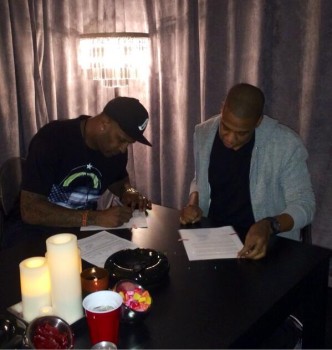Earlier this week we took a look at how each team performed in free agency, with respect to the price they paid their new signers, and those free agents’ predicted WAR values. By doing this we were able to calculate a rough estimate of how each team priced a win this past off-season.
This time I thought it would be a fun little exercise to see which MLB player agency was able to get the most for their client(s). We are essentially rating performance of the money-grabbing villains, a phrase used by Tyler Drenon of The Hardball Times in his recent piece about Scott Boras.
I used the same numbers as in the last post and then connected each player with their respective agency using MLB Trade Rumors Agency Database. I then calculated the average $/WAR value for the players in each agency and compared that to the market average. Before reviewing the chart there are a few issues to address. First, I realized I made a minor oversight in my last post by including relief pitchers when determining team and market $/WAR. Their roles are usually too specific for wins above replacement to be considered a good measure. In the chart below they are not included. Second, I did not take into consideration the bargaining power of each team only the final outcome of the negotiations. For example, a sports agency negotiates with many different teams on behalf of each client and I am guessing not all front offices “play hardball” at the same level. If an agency only had one or two clients in free agency and those clients only had interest from teams with strong bargaining skills, then the final salary might skew towards favoring the team. Basically, we get a more true sense of the figures the larger the number of clients an agency has in that year’s free agency.
Finally, take a look at the chart. The green represents agencies who negotiated salaries above the $/WAR market average for their clients and the red represents those who negotiated salaries below the $/WAR market average. I used the rough estimate from my last post of $6,100,000 as the market average cost of a win. The “% Above Market Avg.” column shows you what percentage of the agencies free agent clients received contracts that represented above market average $/WAR and the rest is self explanatory.

You will notice a few of the big name agencies in the top half such as Boras, Wasserman, and CAA. It’s interesting that this off-season Octagon, one of the largest sports agencies, worked with free agents who received salaries that translated to a below market average $/WAR. They represented players such as Jason Hammel and Victor Martinez. Martinez was their only client receiving a contract that translated into $/WAR above average.
Keep in mind this is just a snapshot in time. Agencies should be judged on more than just one years worth of negotiations. So lets take a look at how these agencies did in the 2014 off-season. In this chart the estimated market average cost of a win is $6,200,000.

Looking at the 2014 chart there is definitely some shifting around from year to year. This might have to do with what I mentioned earlier about the matchup between the free agent and their possible suitors, whose bargaining efficiencies differ. However, I think we can agree that it is no surprise that the Boras Corporation is at or near the top of the list in 2014 and 2015. Octagon is in the lower half of the list in both years which could be totally random, a start of a possible trend, or just an agency strategy. There is no way of really knowing unless we look back further in history which unfortunately, will not be occurring in this post due to time constraints. I cannot end without mentioning Jay-Z’s Roc Nation agency. They only represented one client in the 2014 free agency, Robinson Cano, but it looks like they did well.
The main purpose of the post was to give you an idea of how the “cost-of-a-win analysis” can be related to all parties involved including player agencies. Put as much stock into the analysis as you want. I think it gives us a decent approximation of how well agencies are performing for their clients. Obviously, there is a lot more that goes into players choosing an agent like fees and perks, but if we isolate salary, this might shed some light on their negotiating skills.
For a list of all player agencies I suggest going to MLB Trade Rumors Agency Database.
Next post: The Historical George Herman RuthPrevious post: Opening Day through Modern Box Scores





Leave a Reply